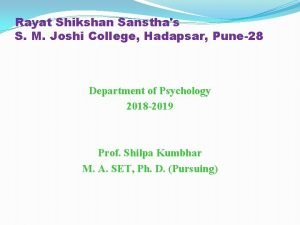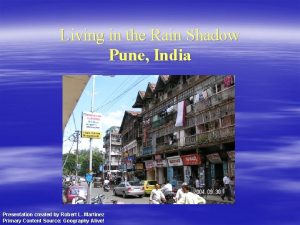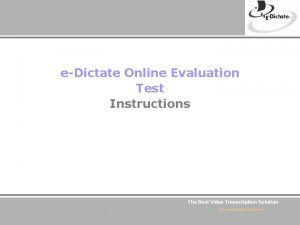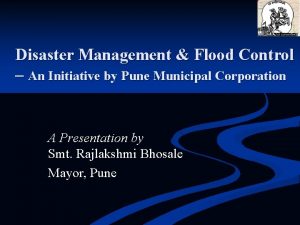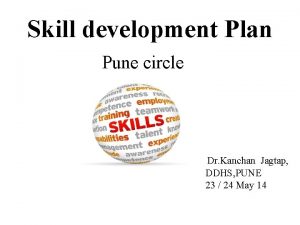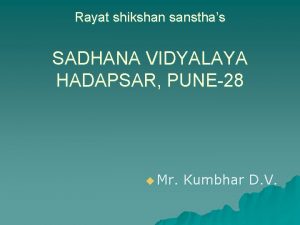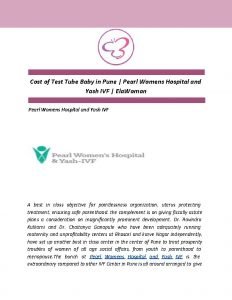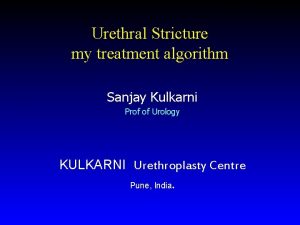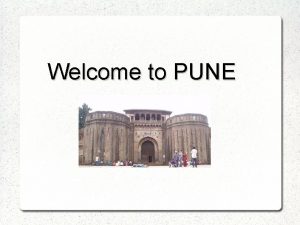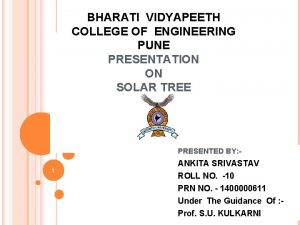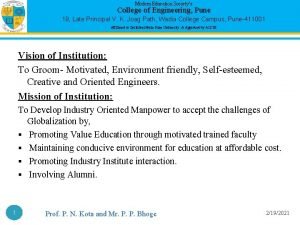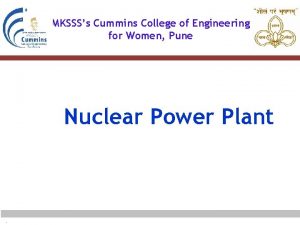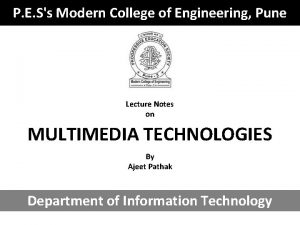MAEERs MIT COLLEGE OF ENGINEERING PUNE Department of











- Slides: 11

MAEER’s MIT COLLEGE OF ENGINEERING, PUNE Department of Electronics & Telecommunication Engineering Faculty Orientation Workshop On SE (E&TC/Elex) Revised Syllabus 2015 Course under the aegis of Bo. S Electronics, Savitribai Phule Pune University 15 th - 17 th December 2016 Sub: - Analog Communication

UNIT I: AM TRANSMISSION By Mrs. Manisha Dudhedia/Agnani

Course Objectives The students are expected to demonstrate the ability to: • Describe and analyze the mathematical techniques of generation, transmission and reception of amplitude modulation (AM), frequency modulation (FM) and phase modulation (PM) signals. • Evaluate the performance levels (Signal-to-Noise Ratio) of AM, FM and PM systems in the presence of additive white noise. • Convert analog signals to digital format and describe Pulse and digital Modulation techniques.

Course Outcomes On completion of the course, student will be able to: 1. Understand identify the fundamental concepts and various components of analog communication systems. 2. Explain signal to noise ratio, noise figure and noise temperature for single and cascaded stages in a communication system. 3. Describe analog pulse modulation techniques and digital modulation technique. 4. Develop the ability to compare and contrast the strengths and weaknesses of various communication systems.

Contents • Base band & Carrier communication • Generation of AM (DSBFC) and its spectrum • Modulation Index & Power relations applied to sinusoidal signals • DSBSC – multiplier modulator, Nonlinear generation, switching modulator, Ring modulator & its spectrum • SSBSC • ISB & VSB • Block Diagram of AM Transmitter • Broadcast technical standards

Practical 1. Design, Build & Test class C tuned amplifier for AM Generation / Simulate using desirable Software

Emitter Modulator Circuit

Course Outcomes of Unit I

Upon completing Unit I, the student will be able to: • Describe theory of amplitude modulation techniques • Compute the modulation index of AM • Draw an AM, DSBSC, SSB, ISB and VSB signals • Analyze and determine through computation the carrier power and sideband power in AM and its variants • Solve problems involving frequency components, power, current and bandwidth calculations • Understand the differences between AM and its variants • Explain different approaches for the generation of AM, DSBSC, SSB, ISB and VSB signals.

References Text Books: • 1. George Kennedy, “Electronic Communication Systems” 5 th Edition, Mc. Graw-Hill. • 2 Dennis Roddy &Coolen, “Electronic Communication”, 4 th Edition, Prentice Hall. Reference Books: • 1. B. P. Lathi, “Modern Digital and Analog. Communication Systems”, 3 rd Edition, Oxford University Press. • 2. Simon Haykin, “Communication Systems”, 4 th Edition, John Wiley & Sons. • 3. Taub& Schilling, “Principles of Communication Systems”, Tata Mc. Graw-Hill. • 4. Frenzel, “Principles of Electronic Communication Systems” 3 rd Edition, Tata Mc. Graw-

